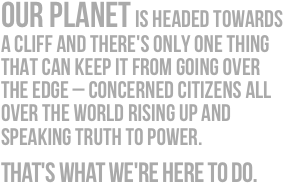This is an incomplete post salvaged from the internet archive.
-by Matthew
Extreme weather events are becoming more and more frequent due to the current process of climate change. Hurricane Katrina devastated one of the world’s superpowers last year, leaving most of New Orleans underwater and killing thousands of The United States’ underprivileged population. This occurred in a developed country with access to proper emergency response services and medical care facilities. What happens in Africa, an entire continent of developing countries, many without proper healthcare or emergency response facilities, when an extreme weather event hits? What types of extreme events occur and where? And what steps can be taken to avoid loss of life in connection with climate? The Red Cross/ Red Crescent side event from yesterday attempted to answer these vital questions.
The European Union Pavilion tent was not even close to full for the presentation titled “Climate Change and Disaster Risk in Africa: changes in extreme weather events under Global Warming.” I found it shocking that so few delegates attended this presentation when Kenya, and most other countries in Africa, are so predisposed to these extreme climatic events. Perhaps the rain that plagued those commuting to the Pavilion dismayed the delegates from attending. Nonetheless, a huge percentage of Nairobi’s population is in a situation of tremendous susceptibility. A walk through Kibera, the world’s second largest slum and one of the most at risk places in East Africa to floods, houses thousands of Nairobi’s poor. If an extreme weather event such as a prolonged rain season (climate models have shown this to be imminent) hits Nairobi, most of the people residing in Kibera would become environmental refugees.


